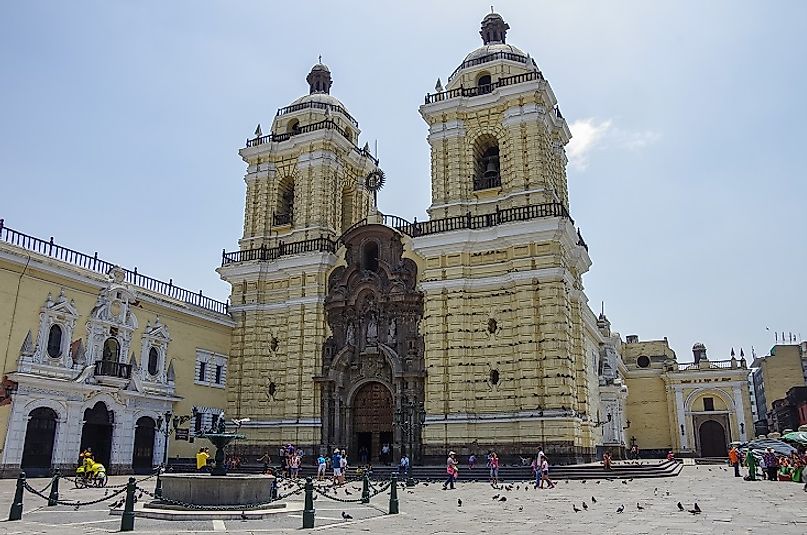Religious Beliefs In Peru

Peru, a country in South America, is officially known as the Republic of Peru. Ecuador and Colombia border it to the north, Brazil to the east, Bolivia to the southeast, Chile to the south, and the Pacific Ocean in the west. It covers an area of 496,225 square miles with an estimated population of 31.2 million making it the most populous state in South America. The predominant religion is the Roman Catholic, but other Christian faiths are scattered. However, the indigenous people of Peru have blended their traditional beliefs and Catholic faith. The religious tolerance and freedom in Peru can be seen whereby certain evangelical groups are doing away in with traditional practices of these communities by the imposition of different lifestyle norms, such as the style of dressing. Religious tolerance and freedom are achieved through generosity to accept the virtues of the other, and this is the current state of the law in Peru whereby one is supposed to accept another person without trying to change them. The Study shows that the country currently cannot claim that it has acted with generosity or tolerance in dealing with a variety of cultures within its jurisdiction. The Peruvian law should, therefore, limit itself to creating adequate legal sake so that Peruvians themselves may freely choose, manifest, and practice his religion without coercion but should be restricted in order to protect the rights of others as well.
Roman Catholic Christianity
The constitution recognizes Roman Catholic Christianity in Peru as an important element in the historical, cultural, and moral development of the nation. It is the most popular religion as 79.2% of an entire population in the country. The Catholic clergy receives monthly remuneration from the government apart from the stipends given to them by the church. Each diocese receives a monthly institutional subsidy from the government as it was signed with the Vatican in 1980. The Catholic Church receives preferential treatment in the matter to deal with education, tax benefits, immigration of religious workers, and any other area of the agreement. The Roman Catholic has considered the primary religion in the country even though the constitution states that there’s freedom of religion. In addition to that, it is mandatory for religious education to be in the school curriculum whether it is private or public.
Protestant Christianity
11.3% of the entire population of Peru identifies as Christian Protestants. There is a rapid growth rate in Protestants in Peru is high, and the church leaders are hopeful that it’ll triple in the next few years. In a report given by the director of the National Evangelical Council of Peru (CONEP) says that the evangelical church in Peru is growing at the rate of 17% per year. The director of CONEP attributes the increase to the prayers and unity among these churches and also added that the aim of the churches is to bring out holistic growth in which Christians are committed to both the church and making a difference in their country and society.
Non-Believers
Atheism is the lack of belief in any God or deities, as well as total denial of the existence of any god. Only 4% of the entire population in Peru are atheists. According to the National Institute of Statistics Informatics (INEI), the non-religious population had experienced a doubling in size between 1993 and 2007.
Other Religions
There are several other religious groups present in the country of Peru that are worthy of our consideration. These are Mormon (LDS), Other Christianity, Baha'i, Islam, and Buddhism among others. The Latter-Day Saint (LDS) Mormon temples currently number only two in Peru, and are home to more than 100 stakes of the church. Buddhism was introduced to Peru in 1899 with over 50,000 practicing Buddhists. Mahayana remains the largest Buddhist school in the country. Baha’ faith was founded in 1930 in Peru but achieved its independent community in 1962 with more than 41,000 Baha’i’s. Islam was founded in 1980 and had a following of 5,000 Muslims, and the number has remained consistent. All these religion forms 5.5% of the entire population
Religious Beliefs In Peru
| Rank | Belief System | Share of Population in Peru |
|---|---|---|
| 1 | Roman Catholic Christianity | 79.2% |
| 2 | Protestant Christianity | 11.3% |
| 3 | Atheism or Agnosticism | 4.0% |
| Mormon (LDS), Other Christianity, Baha'i, Islam, Judaism, and Other | 5.5% |







